Peter van Heulen was born in Vlissingen, The Netherlands. At age sixteen he decided to study photography and mechanical engineering. His work has taken him all over the world and he has carried his camera along the way.
Zeeland is the inspiration for many of Peter’s photos. The more Peter travels around meeting people and learning about different cultures, the more he focuses on human interest stories. His work has gained permanent places in hotels, restaurants, offices, and private homes around the world. Besides photography, he writes and publishes books about photography. His latest book is about learning to shoot glamour photography.
Over the last five years he has explored the unbeaten paths on the island of Sulawesi in Indonesia. His goal is to show the world the beauty of tribes and cultures in Indonesia.
Words and Images by Peter van Heulen

Two years ago, my wife, Desiree van Heulen, and I had the opportunity to go to Indonesia together. When we traveled to Kendari, Sulawesi in the beautiful southeastern part of Indonesia in 2016 we found a place where time seems to have stood still. It’s as if we had taken a time machine twenty years back into the past.
People live in harmony and honor the old traditions and are proud to show it. It is a photographer’s paradise. If you like cultures and tribes, come to Indonesia. I found a fishing tribe called the Bayo who have lived for ages in their houses on the ocean. This way of living is so special that I felt the need to find a way to show it to the world. In 2018 I visited the village again, this time for more than a half year.

Preparing for living a half year in the tropics is almost the same as preparing for a summit climb. You need to think about the risks, the money, the right equipment, and personal belongings. It’s a challenge to fit everything you need into one backpack. Lucky, when I was in my twenties, I did a lot of rock climbing and hiking in the Alps, so traveling light is not new for me.
Another challenge is the language. All tribes have their own dialect and I cannot speak any of them. Google translate helps, but 80% of the Bayo people cannot read. We say in Dutch, met handen en voeten werkkomen we er wel, with our hands and feet we manage to communicate.

For the tropical climate you also need warm clothes and a good rain cover for you and the backpack. I learned from my last trip in the mountains in Sulawesi that it is handy to have socks, trousers, and a warm jacket. When sudden thunderstorms and heavy rains come, the temperature can drop from 34 to 20 degrees Celsius. Believe me, it gets cold.
Flying with your gear can be challenging. At every security check I was picked out of the line, maybe because my f-stop Ajna photo backpack is orange and attractive. I’ve accepted that I travel with suspicious-looking equipment in my backpack. So, I make sure I am on time getting to the airport.

Remember to put your tripod in the suitcase and any lithium-ion batteries in your carry-on luggage. Something else that is important to remember is to charge laptops and tablets before traveling. Not only will they be ready when you have a security check, they are nice to have when you have a delay and time to kill.

Packing is always a challenge. My suitcase is no problem since all my heavy stuff fits in there. I put as much gear as possible in my f-stop backpack. I always take two backpacks with me: the Ajna as a carry-on and the Guru UL in my suitcase for small trips and low-profile shooting. The Ajna is perfect for my needs.

All my gear I try to fit in a f-stop Pro ICU - Large, such as my Fujifilm camera and lenses, filters, batteries, and my Elinchrom ELB 400 with lamp heads and spare battery. All other small items I put in a sleeve on top of the ICU, together with some small reflectors. My tripod is a Gitzo I altered to also use as a light stand for my flash. On the outside of the Ajna I put my normal tripod, my soft box, and an extra small lampstand. I put my valuables in the inside zippered pocket. And last, but not least, I attach my house key to the special keychain in the backpack.

My adventure started in Kendari, Sulawesi in November 2018. After a few weeks of acclimatization, I was up to the challenge. This time I brought my friend Rahmad Ladae with me. He is a brilliant video maker. Together we have had many adventures; some bad, but most of them were fun. Most importantly when working together is to rely on each other. I took my motorbike, put on all my gear, and went for a two-hour drive through the jungle to Bayo Village, near the city of Kendari. This is where my real adventure started. I was going to do an in-depth story about a tribe that has lived for ages on, and with, the ocean.

I am a tall Caucasian with blue eyes and grey hair and have an orange backpack. I definitely stood out since most of the people had never someone like me before. For the first few days I only walked around making pictures of the children playing in the little village. Once you earn the trust of the kids, the parents get curious and invite you to come into their homes. The houses on the water are built from wood and walk boards connect all the houses with each other.

In the village people wake up half an hour before sunrise, which is one of the best times to make pictures, such as of fishermen going out with their little canoes to the ocean to catch fish.
Women, children, and older people stay in the village. There is no drinking water, so every morning women walk to the mountains to get fresh water for cooking and drinking.
Every morning the children jump in the water to wash and play. The women start to wash the clothes and cook after that they take a shower and take care of the kids. There are no showers with hot water, they use a little bucket called a mandi to shower. While the village wakes, salesmen come on their scooters to the village to bring rice, vegetables, fruits, and household items.


I had a great opportunity to stay a few days in a house of an older woman who lost her husband at sea and her only son cannot fish because his right leg was injured while fishing with dynamite. It is a pity they still use this method since it kills the coral and flora and fauna in the ocean. The villagers grow up in the village and rarely go to other places. The majority of the older people cannot read or write and never went to school.

The best opportunity to make pictures is in the early morning and in the evening, as the sun is going down. In the morning you need to act quickly because the sun rises very fast and in one hour it’s already too harsh to make good pictures. In the night you can make perfect night-sky pictures. Since there is no light pollution, the sky is full of bright stars and planets. Sometimes the Milky Way is so bright that it seems unreal.

Working in the tropics is a real challenge, not only for me as a photographer but also for the gear. In the tropics, the performed well. The Ajna is perfect for hiking trips and also for traveling with a motorbike. You can lower the back straps, so the bottom of the pack sits on the buddy seat of the motorbike. In my ICU I use small Velcro pieces to hold the lenses and other small things in place. The ICU is one of the best inventions from f-stop. They are easy and fast to get gear in and out of. Before putting the ICU in the backpack, make sure to zip open the cover and fold it to the bottom side, so it becomes an extra soft pouch for the back of the ICU. Slide the ICU into place, and you are ready to go on an adventure.
I love the color of the backpack, first of all it’s the national color of my home country. It is also easy find it with this bright color, even in the night. Sometimes when I do night-sky photography, I put some reflecting material on the outside, so it is easier to find my pack when it’s totally dark.
With this series of pictures, you get a good idea of the daily life in the fishing village. We had a great time there and after six months in Indonesia I needed to go. I have the feeling my work is just starting here though. So, my next journey is set for October 2020, to finish the job. But, it is never really finished.
"We Are f-stop" is for all f-stop users to share their stories from the field, from small daily adventures to epic travels. Contact us with your story on Facebook or drop us an email to [email protected] and let us know where your photography takes you and your f-stop pack!
SHOP ALL GEAR MORE WE ARE f-stop


©2022 F-stop
I'm a passionate semi-professional photographer based in Langenfeld North Rhine-Westphalia, in Germany. I focus on action sports and event photography, and every year I try to take a week off to surf. Last summer I made this journey to the Algarve in Portugal, to combine surfing, taking a break, and shooting some lifestyle images for a brand with a strong environmental mission.
Words and images by Chris Lehnert

Long story short, it was a week off.
I was doing this kind of trip for the third year in a row. First of all, I do this to recharge my batteries after an exhausting season and also to reflect my current goals and set new ones fort the upcoming year. I chose Portugal because I love to surf and there are always good waves around that time of the year on the Algarve coast.

Through happy circumstances I could get in touch with the brand mizulife. The brand is well known in the surf industry for their sustainable drinking bottles. It was arranged for me to take some bottles with me on the trip to shoot lifestyle images for advertising purposes.
As we all know there’s a huge plastic problem in our oceans. I’m not only a fan of the brand, but I also want to make my contribution to draw attention to the topic and the easiest way for me to do this as a photographer is to take pictures.

I use the Loka UL pack for all my shootings with the Large Pro ICU. I love the light weight of the backpack and the large size ICU gives me all the space I need to pack a large camera kit and still have enough space for some extra equipment.

Trips like this give me a moment to catch my breath, set up my appointments for the coming year, and look ahead to making trips to 'bucket list' destinations happen ...like a trip to the Northern Lights in Iceland?
I started to take photos in 2012, and since then I have explored many different areas of photography. As a passionate wakeboarder I am engaged in the wakeboarding industry and able to shoot for different clients all over Germany. I was always inspired by the sport itself and also motivated to catch athletes at the right moment to get a nice shot. Along the way, I have been approached by friends and organizations to photograph their events more often, and so have I focused myself on event photography as well as action sports photography.
The easiest way to see my work is to take a look at my website and also to follow me on my social media accounts on Facebook and Instagram, for recent projects and images.
"We Are f-stop" is for all f-stop users to share their stories from the field, from small daily adventures to epic travels. Contact us with your story on Facebook or drop us an email to [email protected] and let us know where your photography takes you and your f-stop pack!
SHOP ALL GEAR MORE WE ARE f-stop


©2022 F-stop
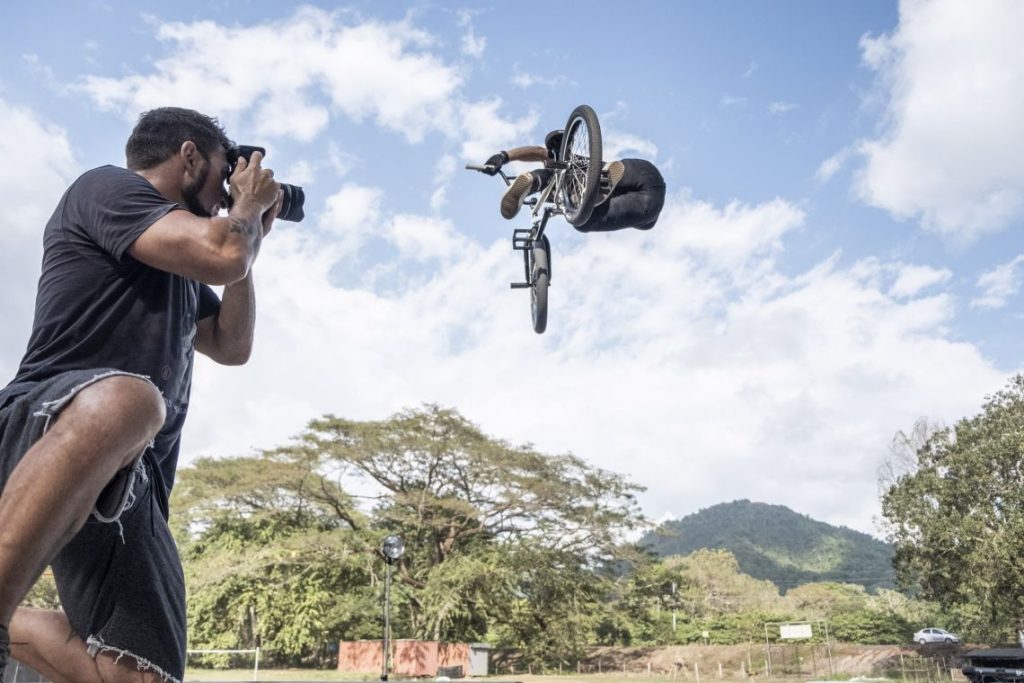
f-stop Ambassador Agustin Munoz has been friends with pro BMX rider Kenneth Tencio since he was young. As an action sports and adventure photographer, it helps when your childhood friends become world-class BMX atheletes, but this doesn't usually happen when you are growing up in Costa Rica. In this We Are f-stop story, Agustin takes us behind the scenes of shooting BMX in the jungle, and how he sized down to a more compact mirrorless set up for shooting the action...
Words: Agustin Munoz
This is a video about Kenneth Tencio, who has been growing as a bmx pro rider and is now a Red Bull athlete. Here in Costa Rica, there are no BMX parks like this, so Kenneth decide to build his own, welding and building it with his own hands. Kenneth trains at his self-built "10-cio park" and that dedication has brought results. Last year he podiumed four times, including 2nd place at the biggest BMX event in the world in China. I have personally known Kenneth since a very young age, and we have shared a lot of very good times creating projects and photoshoots together, and i feel very proud of him and what he has achieved.
Agustin Munoz BMX project from f-stop || Gear on Vimeo.


For this video I was using Fuji X-T3 and X-H1. Those cameras have the ability to record at 120fps, which allows me to play with speed reamp effects. Also I am able to record on F-LOG, a format that makes the image flat with a lot of information on shadows and highlights, so later on in editing i can use different type of 'LUTS' for more options with color grading. These cameras also have a very accurate and fast focus tracking on video, something that lets me work with wide-open apertures without having focus issues. The lenses I have been using are; Fujinon 8-16mm f2.8, 18-55mm, 56mm f1.2 and for the very close up a 200mm f2.0. Most of the clips where shot with the DJI ronin S stabilizer. For the drone shots, I have been loving using the DJI Mavic pro 2.
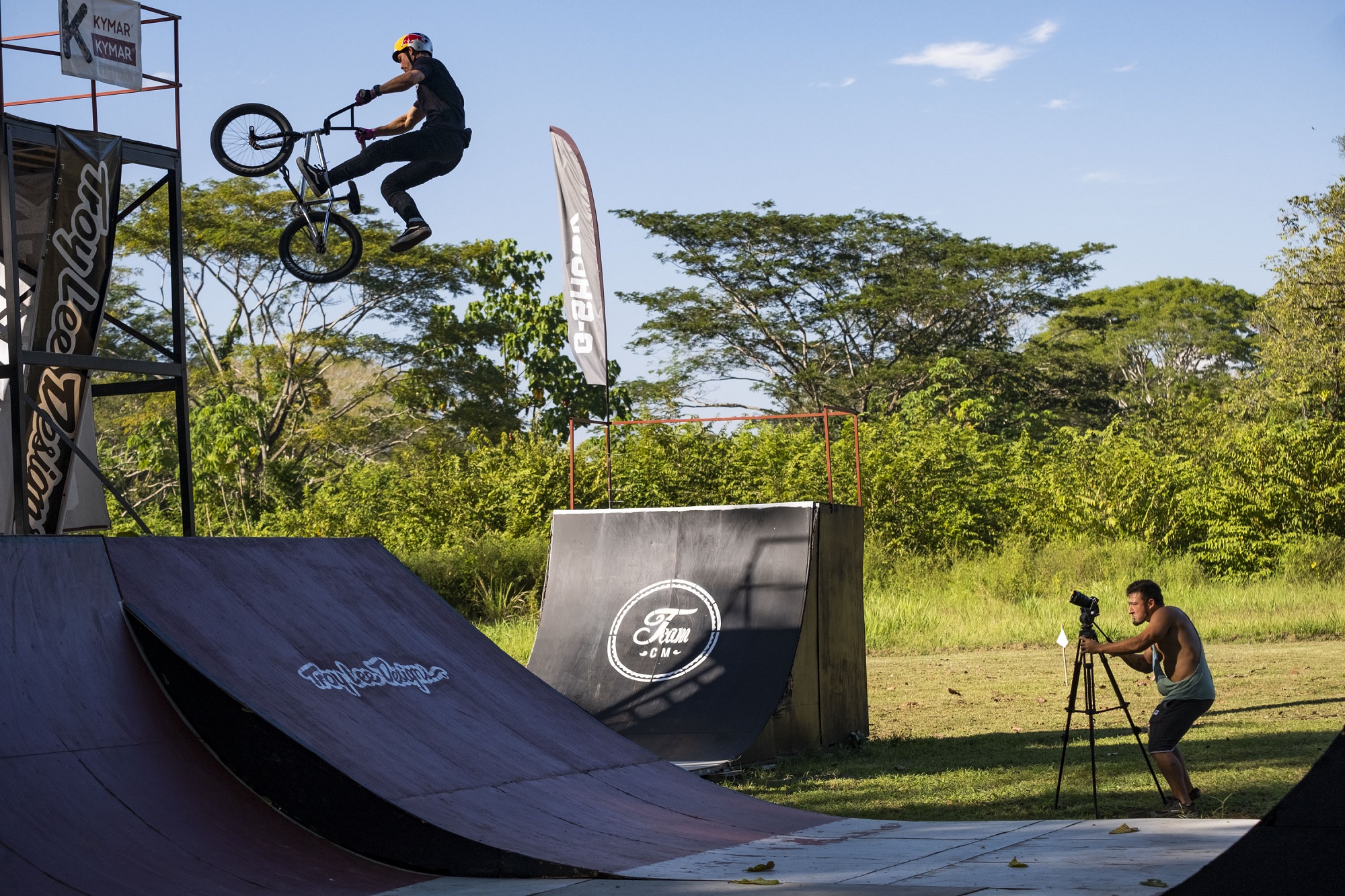
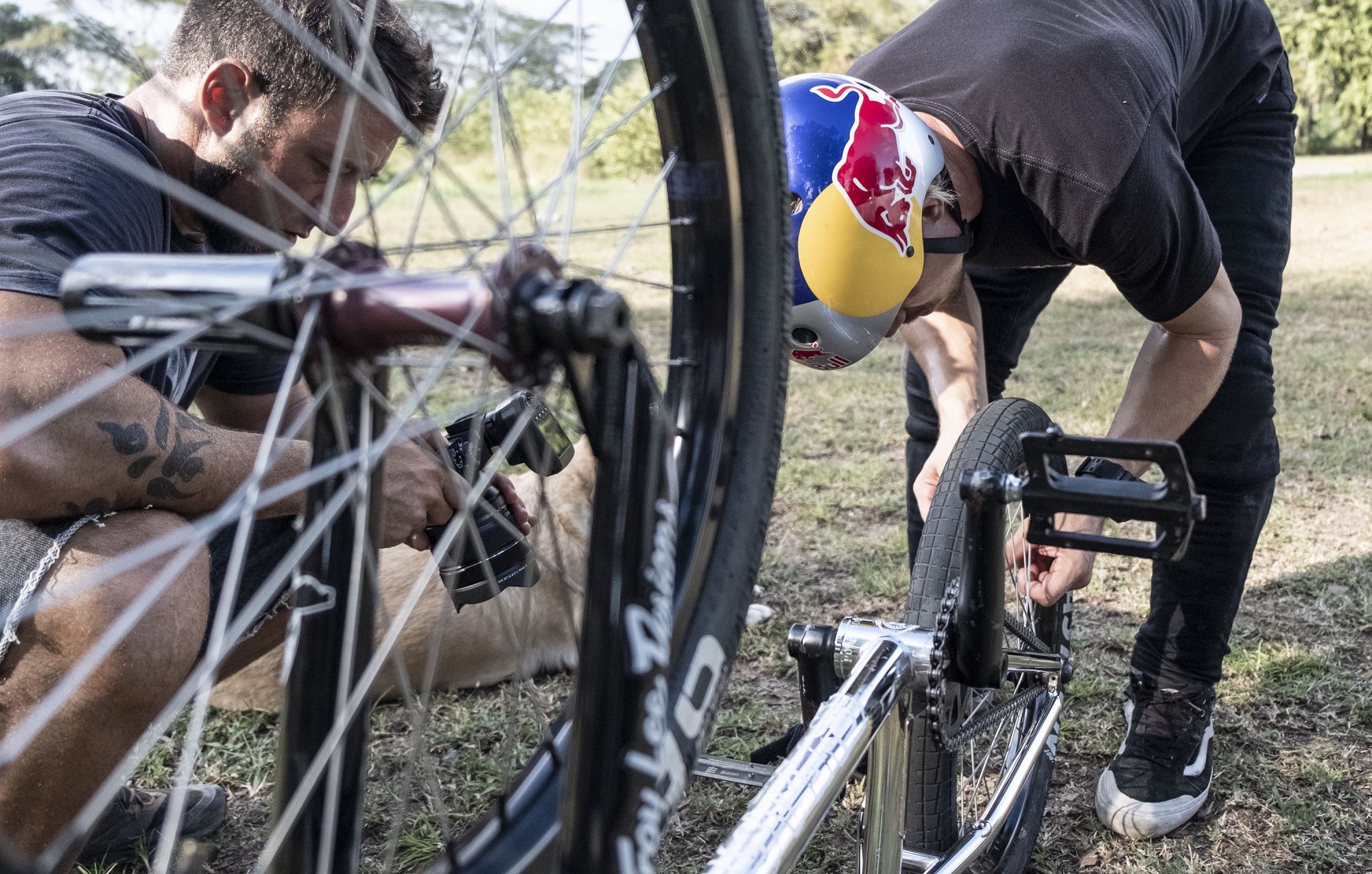
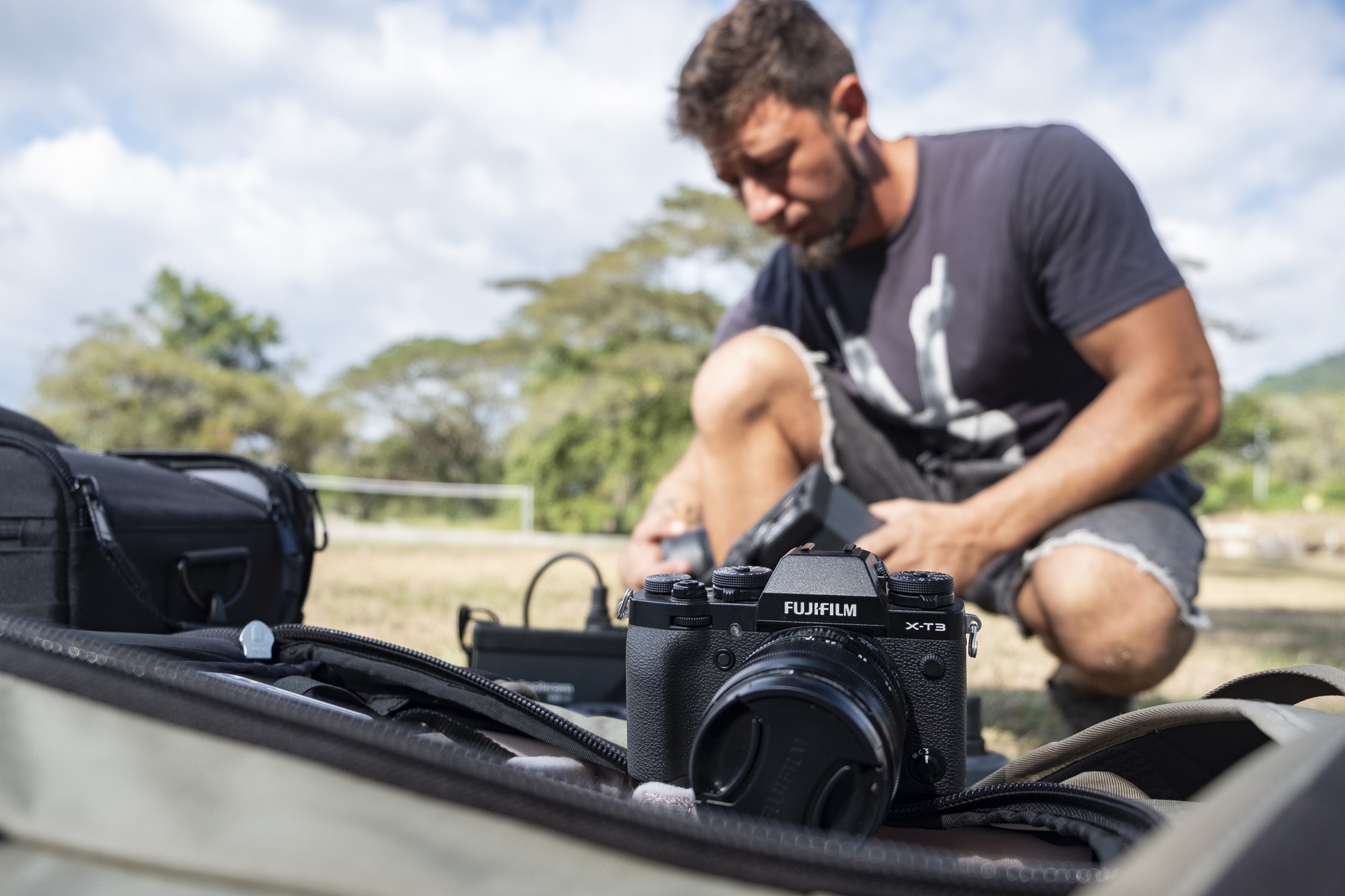
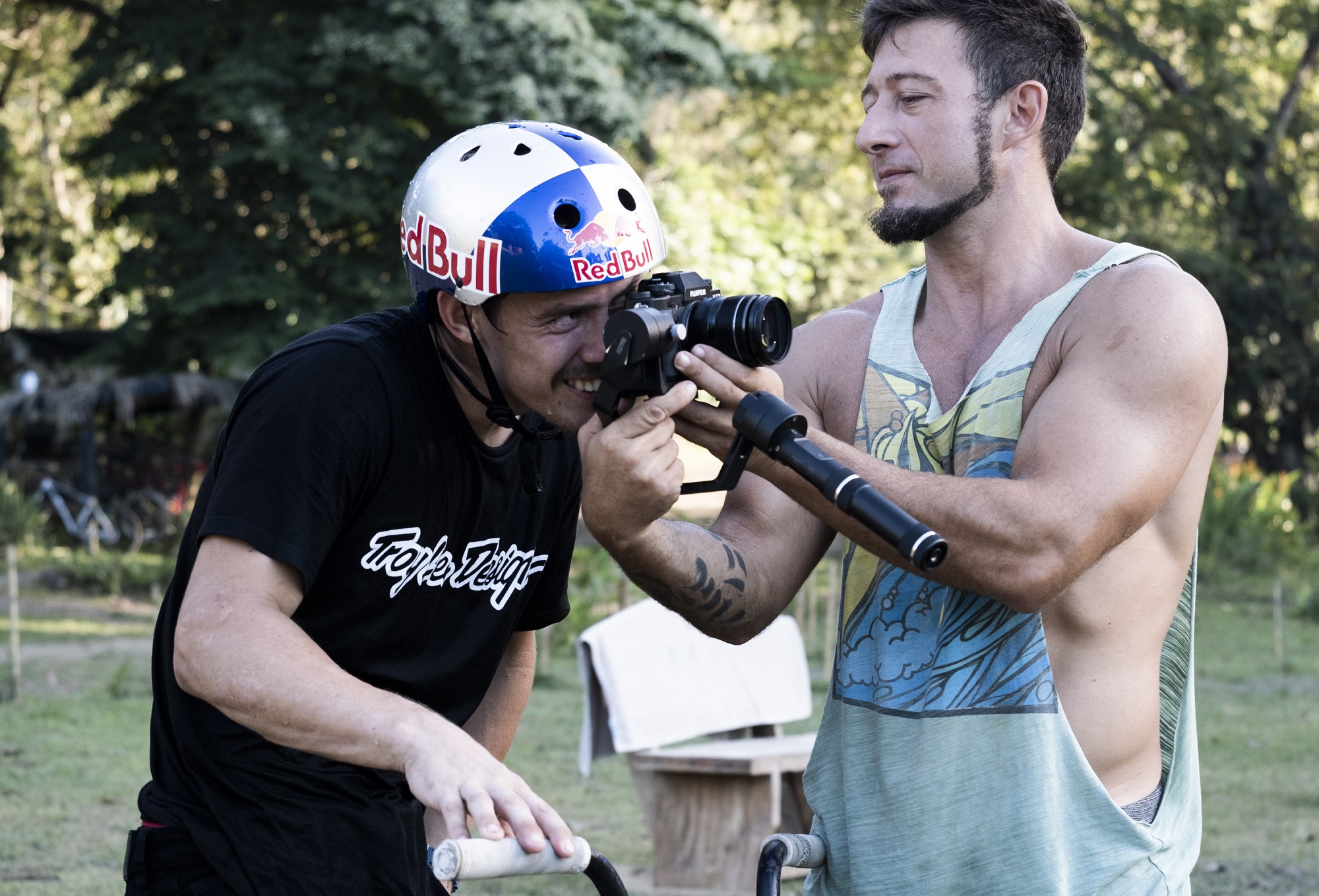
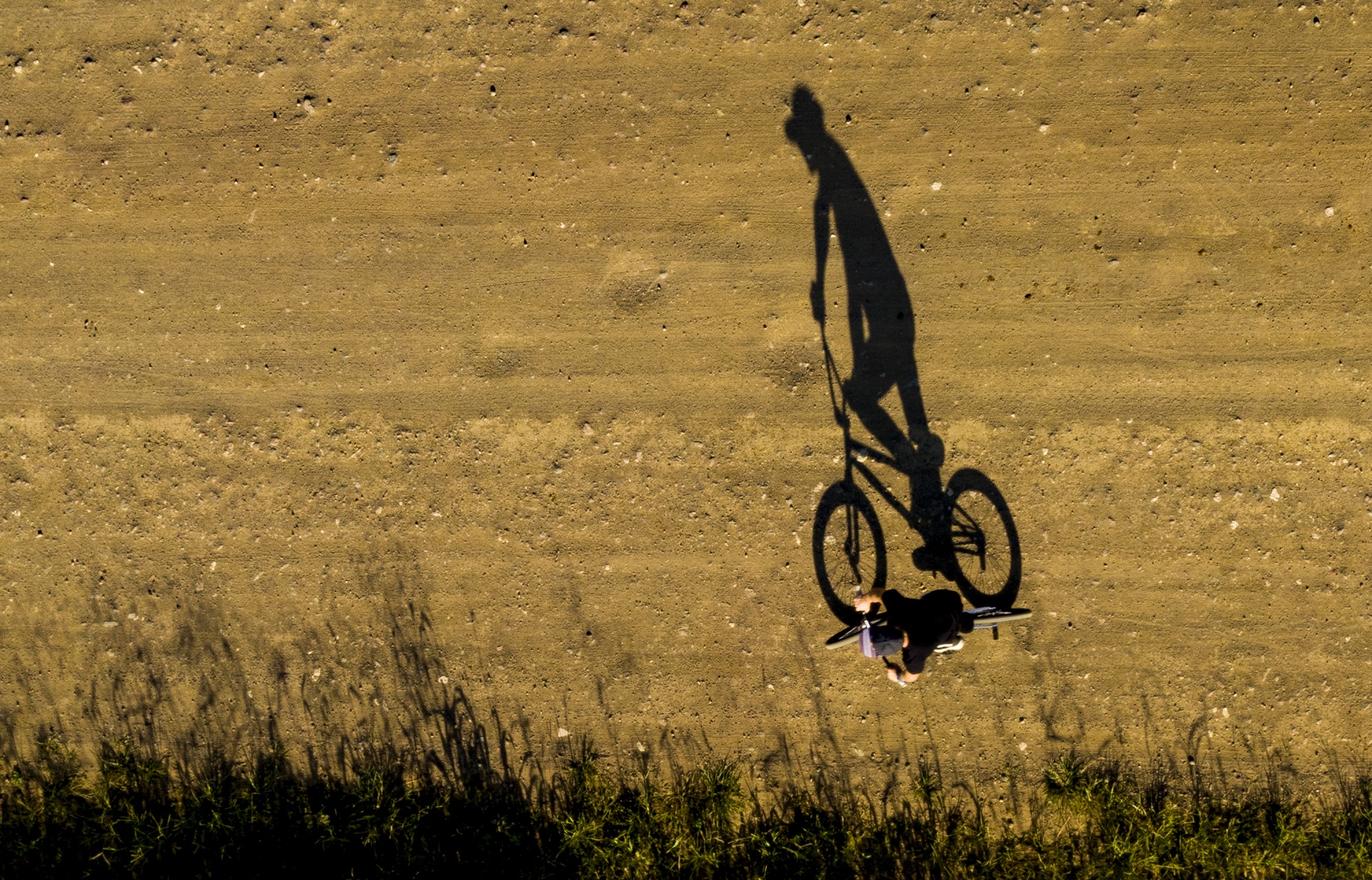
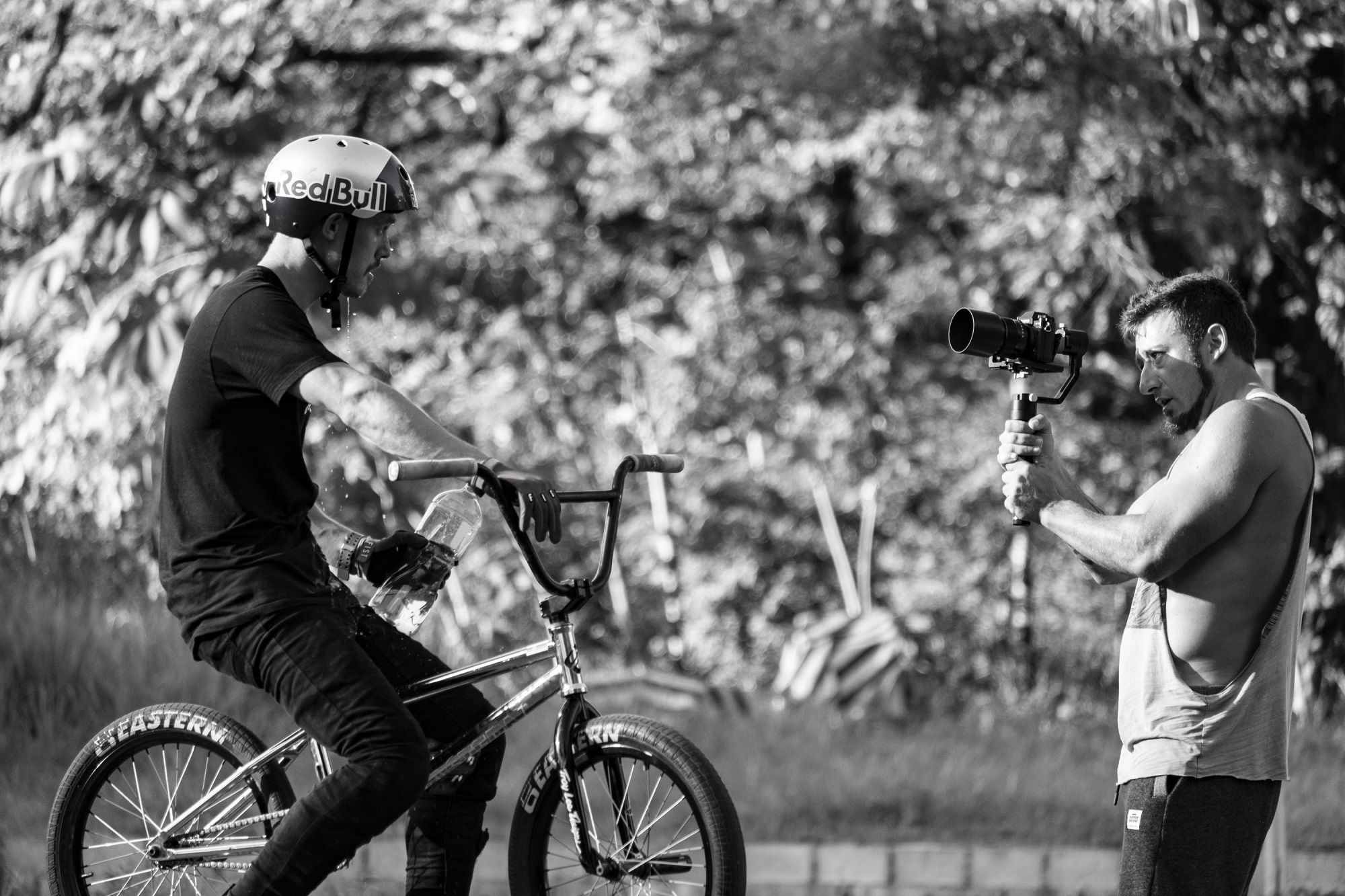
I used to use the Tilopa when i using my Canon set up, but since i move to the the Fuji system, the Lotus is more than enough to carry all I need for all kind of photoshoots.
I like to put my 2 camera bodies and all my lenses in the main compartments of the ICU, then carry the drone sitting on top of the large ICU, in the space between the ICU and the top lid. In carry an f-stop Accessory Pouch filled with extra batteries, camera charger and sensor cleaner tools - all the small things you can't forget - which fits just right in in the side pockets.


For this video, f-stop Ambassador Agustin Munoz used the Lotus, with a Large Pro ICU and the Medium Accessory Pouch.



"We Are f-stop" is for all f-stop users to share their stories from the field, from small daily adventures to epic travels. Contact us with your story on Facebook or drop us an email to [email protected] and let us know where your photography takes you and your f-stop pack!
SHOP ALL GEAR MORE WE ARE f-stop


©2022 F-stop
Japan is one of the worst-kept secret for skiers and snowboarders seeking powder, but it the cultural and travel aspect that keeps people coming back. Not many people get to spend a month travelling 2000km aorund Japan snowboarding like f-stop customer Juan Aizpuru from Spain. Here's his travel and powder project in his own words...
Words and images by Juan Aizpuru
My name is Juan Aizpuru. I am a Spanish photographer who travels and lives in any snow-covered part of the world. I’m from the Basque Country, a little ¨country¨ in the north of Spain. I am currently living in Zermatt, in the heart of the Swiss Alps. I have previously lived in the Pyrenees, the French Alps, Chile, Argentina and Japan.
Actually, I am fascinated by action sports photography because I got involved in the action myself and that really keeps me going. Lately I have mostly worked around winter sports action photography and I am starting to see the results of my work in the main Spanish magazines and some international web magazines. I also write some stories, as it is necessary to add some words to go along the images.

As a visual creative, I’m a person that doesn’t stop until I see the things I like in my camera. Sometimes nature gives us the perfect spots, but normally when you have a good plan before the photo, everything goes better. In that moment, I am trying different pictures, searching for different ways to tell you why I’m doing what I'm doing.
Normally the shots I like most are action sports and for the moment I’m focused quite a lot in winter action sports, but I’m also shooting paragliding, running, and all the sports that I like. Of course, in the past I did all kinds of photography.

I love split boarding, since these snowboards that can transform into skis for ascending came onto the market, I haven't been able to take them off my feet! I like to explore and go out as much as I can. I have accomplished several first descents on a snowboard in Europe, South America, Japan... as well as several 4.000m peaks. I have ventured into unexplored terrain in South America, namely around the area of El Chaltén, several big mountain faces that have rarely been ridden, I have ascended and descended the most iconic Chilean volcanoes, as well as many other big mountains in the area.
My aim is to look for new challenges and to produce images and stories for national and international magazines. And now for the last two years I have been starting to fly paragliders - and that is my new drug, I just can’t stop! In the future I hope that I can create amazing pictures from the sky!

We are shooting a new mini documentary about Japan, with very low budget and a lot of effort. Also, we are doing a small crowdfounding, where we try to get some money at least to pay all the professionals that are behind: graphic designer, soundtrack, narrator, postproduction and sound design. We are giving good rewards for keeping everyone happy.
With Miquel Soler boss of Abstract films, Jose Villalba from Laggon films and the riders Jaume Pons, Jordi Brusca, Carles Aznar, Pablo Sanchez, Yujiro Kondo, Laura Donet and Gabriel Mojon. (Life in White)
Japan is not only manga, sushi and technology... Despite of being a set of islands, it is one of the best dry snow and powder pillows paradise on the planet. Japan has this thing it makes it hard for you to forget once you have visited it.
After our first time there (when we did the project Mata Ne), we felt that there was a whole lot more to discover. So we decided to embark on a new adventure and explain what it really means to surf the Nippon powder. This is how Shiro project was born.
In this project we traveled through Hokkaido Island looking for the best snow conditions. We want to share this hard to explain feeling of hiking mount Asahidake (the higest peak on Hokkaido) or the wonderful landscape of seaside from the hills. We have gone in search of the most remote places to get into a natural paradise of volcanic lands bathed by an abundant white layer...

As a part of the work for team "Shiro", we have traveled to Japan several times to work as mountain guides and snowboard coaches. Through that we have been discovering more and more spots on this island that, if you follow us on our project, you will also discover and who knows, maybe the next one to travel there will be you.
And now, if nobody told you that before, you already know that Japan is one of the best destinations for snow, and this was the first reason why we decide to discover it, But when someone travels through that country, they fall in love with the culture, the landscapes, the people, and mmmm! the food!
This is how this project was made, we traveled for one month, for more than 2000km in a van around the island to tell this story to you.

When you have the best gear on your back, it’s easy. I used my Tilopa backpack all around the world, from Ushuaia (Argentina) to Rishiri (Japanese island close to Russia). In the hardest conditions and at all moments, it was working perfectly. Also, the size… it’s amazing, for expend days in the mountain with all gear, sleeping bag, tent, fire...and for daily routine, easy access, and strong like iron.
When you carry 3 flashes, 2 tripods, body, lenses, transceivers in 2 meters of new powder going up, the backpack is one of the most important things.

For the time being, I will be based in Zermatt, Switzerland. We want to come back in January to Japan to try to do the trilogy.
In March to Canada together with Split Board Magazine and some of the best split boarders out there, take a closer look at the Canadian mountains.
April maybe a trip to Norway to discover new areas close to the sea and come back to Switzerland for the best moment (in spring) to try to attack the big mountains around. But the winter is too long, and always changing the plans very quickly.

Part of my work You can see on my Instagram and on my website. This winter, I will offer photo workshops about winter action sports, and the next summer landscape work shops, and actions sports where we will practice quite a few things. I'm doing a new gallery of fine art, where I am working on my own frames in wood during the summer, and I hope every one will like them.
Shiro - Trailer from Abstract Films on Vimeo.
"We Are f-stop" is for all f-stop users to share their stories from the field, from small daily adventures to epic travels. Contact us with your story on Facebook or drop us an email to [email protected] and let us know where your photography takes you and your f-stop pack!
SHOP ALL GEAR MORE WE ARE f-stop


©2022 F-stop
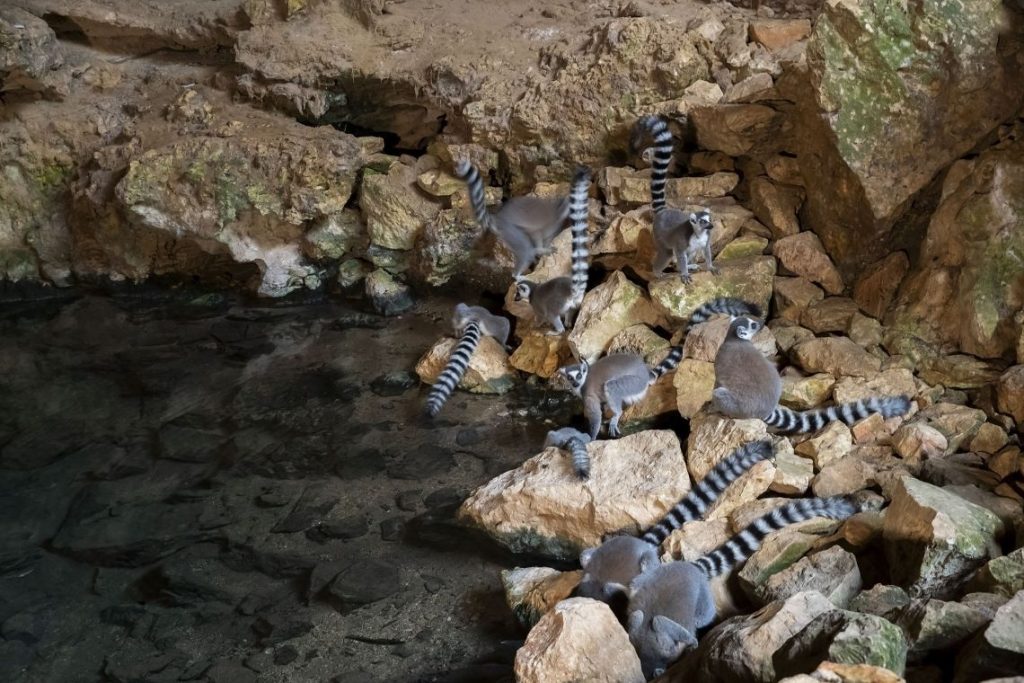
f-stop Ambassador Thorsten Milse is a German nature photographer who specialises in landscape and wildlife photography with a strong focus on conservation and endangered species. He has focused his lens on wildlife from Africa to Antarctica, covering leopards to penguins and kangaroos to walrus - and picking up plenty of awards along the way. Here Thorsten gives a personal glimpse of his next project with the Lemurs of Madagascar - and the gear he's packing to capture these charming critters...
Words and Images: Thorsten Milse

I'm excited to say that our latest photo and film expedition is to the unique world of the 'critters of Madagascar' - a documentary and story about lemurs!
It's a documentary about the special creatures that only exist here in Madagascar. While the images are cute, the reality of working in this location with large equipment was tough and we had a lot of difficulties, such as a broken camera and heavy thunderstorms. If that wasn't enough, we even had to contend with plane crashes and raids! This made the trip a real adventure.
The equipment I was using was Canon EOS-1DX II cameras, as well as a C200 for film and lenses in the range all the way from 16m to 600mm, as well as Sachtler tripods and fluid-heads, and for transport of course our f-stop backpacks, like the Shinn below capable of carrying such big glass while negotiating this terrain.

We also had to take gear suitable for climbing in the caves of Tsimanampesotse National Park, where we started our trip to the lost world of Lemurs together with a team of US biologists.
More than 100 different species of lemurs are living on the island of Madagascar. All of this family of Strepsirrhiniare are endemic mammals to Madagascar. Of these, the Indri is the biggest lemur and the Mouse lemur the smallest primate in the world.
The name lemur comes from the Latin word lemures, which means 'spirits of the night’. Lemurs are prosimians, or primitive primates. They are social animals with long limbs, flexible toes and fingers, and long noses. Each type of lemur looks very different. They vary in colour from reddish brown to gray, and come in all different sizes, too.

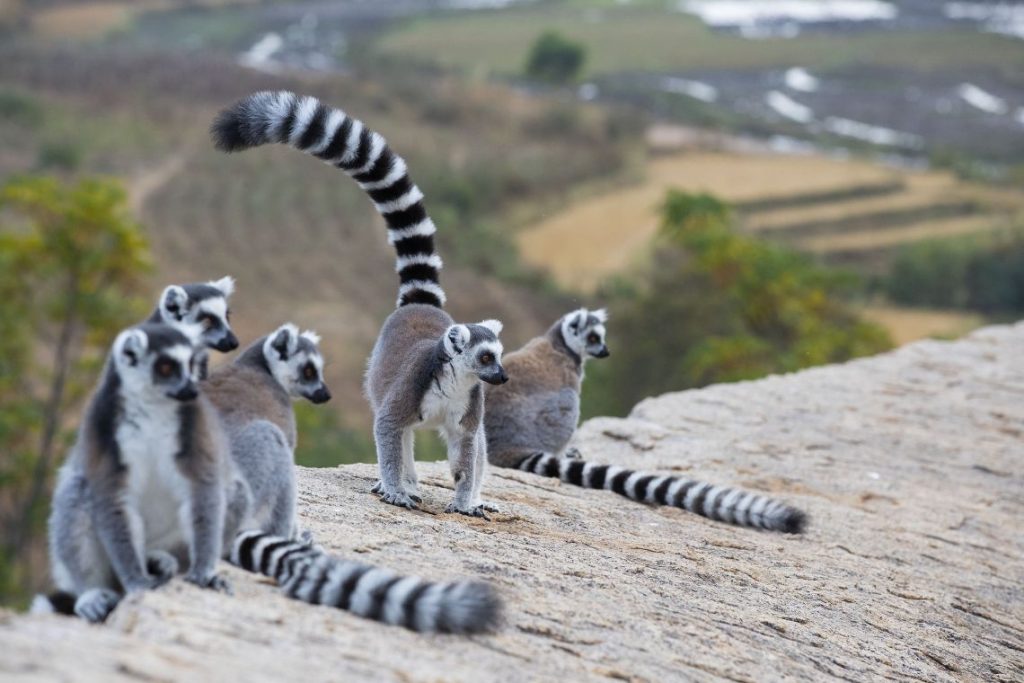
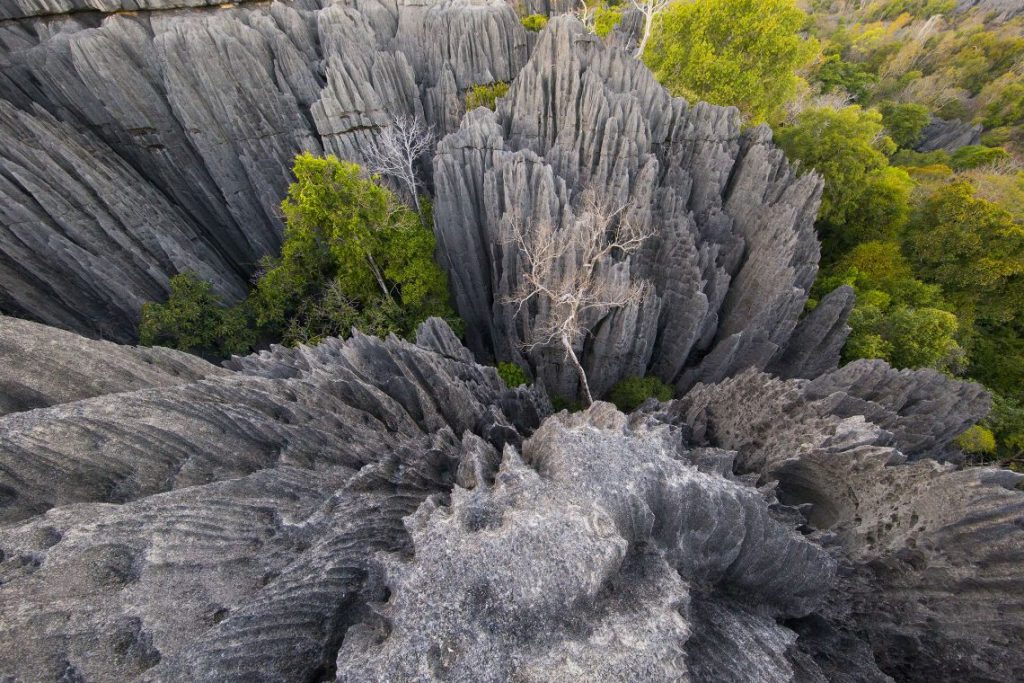
Lemurs live in a variety of habitats. Some live in moist, tropical rainforests, while others live in dry desert areas. Lemurs are often seen 'sunbathing' in a meditative type position. Because their bellies are not as protected from a colder environment, these animals will warm themselves up by basking in the sunlight before they proceed to their daily foraging activities. Lemurs are also very vocal animals, making a huge range of sounds!
Deforestation of the rainforest and being hunted for meat classify them as Endangered Species. Habitat loss is the main threat to lemurs today, as people clear their native forests for farmland. As of now, 80% of the lemur's original habitat in Madagascar has been destroyed.
MADAGASCAR "A unique world of animals" from Thorsten Milse on Vimeo.
Follow Thorsten's Madagascan adeventures and see more of his work highlighting endangered wildlife on his website, Facebook and Instagram.
"We Are f-stop" is for all f-stop users to share their stories from the field, from small daily adventures to epic travels. Contact us with your story on Facebook or drop us an email to [email protected] and let us know where your photography takes you and your f-stop pack!
SHOP ALL GEAR MORE WE ARE f-stop


©2022 F-stop
This We Are f-stop is a story of overcoming the challenges of traveling, to reap the refreshing rewards of new landscapes. f-stop customer Carmine Gammarota is an amateur photographer from a little town in southern Italy, in the Apennine Mountains, who loves the freedom of landscape photography to escape the stress of everyday life. In Carmine's own words, "I just love being alone in a place and capturing with the camera what I see. And when I do, I’m at peace with myself."
Words and images by Carmine Gammarota

My name is Carmine Gammarota, and I started taking pictures 3 years ago, with a tiny GoPro. I was obsessed with long exposures and night photography, so in May 2017 I bought my first professional camera, the Fujifilm X-T2 and for one year I shot only landscapes. Photography saved me, and for me is an escape... Depression and poor mental health can creep into your life without you realizing. And we’re all susceptible to it.

Taking more doesn't always mean taking a bigger bag - Carmine uses the f-stop Gatekeeper straps to carry extra layers.
As a landscape photographer, one of the places to see is Iceland, the land of fire and ice. I started to plan my visit Iceland in February and in October the dream came true! 10 days, 3000 kilometers across the Ring Road ...but a mishap was around the next corner.
When I landed at Keflavik, I realized that I did not have my baggage. During the layover in Paris, Charles de Gaulle Airport had lost it! No warm clothes, no snow boots, no underwear, no medicine, no crampons… and no tripod!

I battled with high winds and the low temperatures, but the worst this was not having my tripod. In Vik I bought some clothes and only when I arrived at Hofn, I was able to buy a cheap tripod. But I did not give up, and I tried to do my best. In fact, at my first night I was able to see and capture, for the first time, the Northern Lights - by putting my camera on my f-stop Tilopa backpack!

My luggage was eventually located, but by then I was in the North (8 hours from Keflavik by car) so it was put on an internal flight and in the evening I was reunited with all my stuff!!! ..and my tripod! 
The f-stop Tilopa allowed me to carry two Fujifilm bodies, lenses (telephoto, wide angle, 3 primes), square filters system and the necessary for the Icelandic trip (gloves, food, rain jacket). Last but not least, I was able to use my Tilopa like a carry on luggage!*
*(Ed. note: The Tilopa isn't within international carry on sizing, but if you pack wisely, don't stuff the outside pockets, and are friendly you can often get lucky like Carmine!)

My next trip? I don’t know, maybe come back to Iceland - unfortunately, on this trip I could not shoot in the southern region, which is in my opinion, the most beautiful and famous area of Iceland - so now I have an excuse to return to this magical place!
Maybe also to go to the USA for the deserts and National Parks next …stay tuned!
Currently I’m editing more Icelandic pics, and you can see them in my galleries on Instagram, Facebook and 500PX.
"We Are f-stop" is for all f-stop users to share their stories from the field, from small daily adventures to epic travels. Contact us with your story on Facebook or drop us an email to [email protected] and let us know where your photography takes you and your f-stop pack!
SHOP ALL GEAR MORE WE ARE f-stop


©2022 F-stop
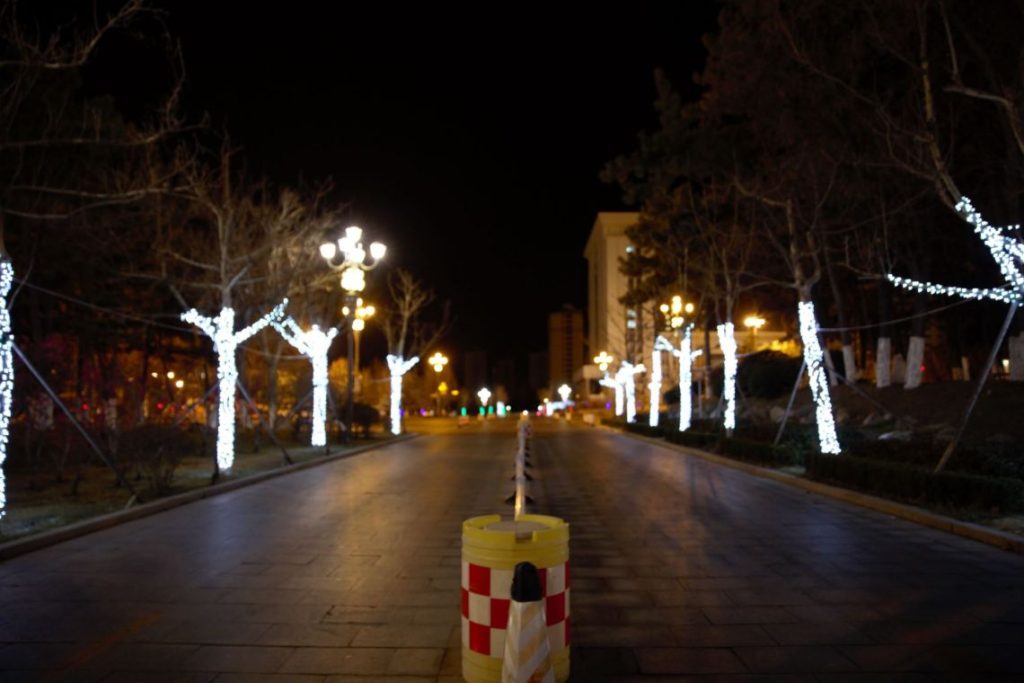
In this We Are f-stop we are taking a look behind the scenes at one of our production partners with Filip Arsov. Filip is a Community Specialist for f-stop, taking care of the Ambassadors the Asia and Pacific region, and helping run events like Hangouts and Photo Crawls in Asia. Getting hands on with production not only ensures quality control but also builds a deeper understanding of our packs.
Words and photos: Filip Arsov / Falk Hicke


One of the benefits of working for f-stop gear is having the chance to see the whole process of how the products are made from scratch, and I got that chance to visit our factory in WeiHai, China, a couple of months ago. It was a great experience and a big learning point for me because until then I only knew how they are made from videos, photos and stories. This experience will help me better understand the products, how they are made and how longs it takes to make one.


First day - getting the tour
On my first day there I got a tour of the factory and I was welcomed with a lot of smiles and laughs. I was walking from one station to another, seeing how the pieces are made, pieces that are part of a big jigsaw that is the final product - the f-stop camera pack. The workers in the factory were not fluent in English, but they seemed to understand me and replied to all of my questions in their mother tongue, and with the help of our interpreter we figured out who is doing what. Before I left the workshop, I found myself holding a handful of banana ice creams that were also given to the workers to cool them down in the summer heat. This happened multiple times during my stay there, and I have to say, the taste of the ice cream was amazing.


Quality inside and outside of work!
The next 13 days we were all hands-on deck, working and checking the products before they are prepared for shipping. The machinist and production staff were really helpful. They showed me the full process starting from how they source the materials, then how they cut the materials, how the products are made, and how they check the quality of the final product. Every product that left the factory went trough couple of quality checks, including mine to ensure that the products that left the factory are have premium quality.
Product was not the only thing I did while I was there, though! I had to try the amazing Asian cousine. One of the things that I was most excited about was the teppanyaki cuisine, which is something I have never experienced before, and I have to say that it exceeded my expectations. The food was amazing, the people were nice, and the chef guided us through his ingredients as he was cooking the food. The night ended with a knife show, along with some amazing beer.


The final step - shipping out around the world
With end of the trip coming up, there was one last big thing for me to do before leaving - see the products being put on a container and shipping them to our warehouses. The containers arrived, and the factory crew started the loading process. The process was fast! They had a strategy where while one group was bringing boxes from the factory, the other crew was loading them to the container and a third group was sorting them in the container, so that they don’t fall down while they are on water. The team did an excellent job, and the loading took just 3 hours. We did a final check, locked up the containers, and saw the products sent out on water.
By this point, the packs had passed through dozens of hands before they were put into a box and shipped to our warehouses around the world. Seeing this gave me an extra appreciation of the work that happens at each step of this way.
After all this, my trip back to Europe to my home town in Macedonia was about to start, but not before meeting up with a friend and Ambassador @Henry CK to grab a well deserved drink in one of the tallest buildings in Hong Kong, the International Commerce Centre. Enjoy the views!

"We Are f-stop" is for all f-stop users to share their stories from the field, from small daily adventures to epic travels. Contact us with your story on Facebook or drop us an email to [email protected] and let us know where your photography takes you and your f-stop pack!
SHOP ALL GEAR MORE WE ARE f-stop


©2022 F-stop
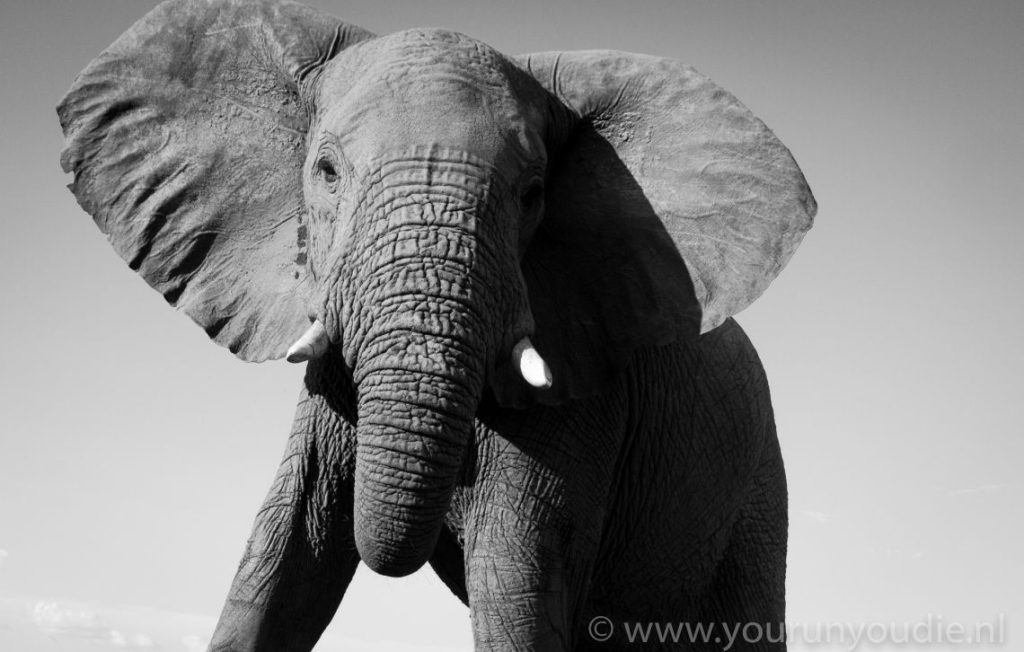
f-stop user Willem Bakhuys Roozeboom is an amateur photographer who likes to ’shoot’ wildlife. In particular, he does really like silhouettes and the challenge of taking those low angle shots of elephants, lions and wild dogs, while being on foot. Not a fan of beetle cams, drones and any other remote controlled cameras, he prefers to go 'in there’ himself. The experience necessary to do this comes from many years of being embedded in the location as a safari camp manager. Read on for Willem's journey into wildlife photography and what taking these images means to him...
Words and photos: Wilem Bakhuys Roozemboom

I ’shoot’ African wildlife. Only. Every now and than I try landscape, a nice sunrise or a corny sunset, but I prefer if there is an elephant somewhere in the back.
It was about 8 years ago that I decided that I wanted to do something else in my life, something more ‘real’. Up till than I had been working as a marketeer for several film companies, promoting and releasing movies in cinemas, for the past 15 years. Nice jobs, a fun product, but at that stage (yes, late thirties!) it all became too corporate and commercial for me. I wanted more honesty, more nature, and more simplicity in my life.
I found a job as a safari camp manager in the Okavango delta of Botswana. I rented out my apartment in Amsterdam, stored my stuff, grabbed my camera’s and all the khaki clothes I could find and left. That was about 8 years ago.
My first elephant encounters in camp were, so to say, interesting, but as time went by I became more and more familiar with their behavior. And with the behavior of the other animals as well, the big ones, small ones, the herbivores and carnivores. My most thrilling pictures I took from underneath my car, as lions, elephants or wild dogs slowly approached.

For years I ran a small, but high-end tented camp (Zarafa camp) in the Okavango delta in Botswana, owned by two - quite famous - wildlife filmers/photographers Dereck & Beverly Joubert.
That’s where my photography kicked off. I’ve you’re living in the middle of the African bush, amongst elephants and lions 24/7, you can’t not pick up a camera. First with a little point-and-shoot camera, which got an upgrade during my first working stint. Three months on/ one month off, that’s my working schedule. And in my leave-month I go travelling, in Africa. It might sound a bit boring, but Africa is huge, diverse and keeps on inspiring me.
Botswana is my favorite place, the delta and the Kalahari. The north of Namibia, Kaokoland is still really remote as well as the Gonarezhou in Zimbabwe. The unique ‘blue haze’ lighting which makes Mana Pools in Zimbabwe so characteristic keeps pulling me in there. The only way to mess up a picture in that ‘mana magic’ light, is by leaving your lens cap on.

After being in Botswana for 5 years, I travelled for about 5 months through Botswana, Zambia and Zimbabwe until the money ran out. I went Kenya, to run a safari lodge in the Lewa Wildlife Conservancy. Lots of rhino’s, beautiful types giraffes and the rare grevy zebra’s, but also a lot of people, fences and city life near by. I wasn’t the pristine African bush I was used to, so I quit.
Next up is Chad. There is a small tented camp in the middle of Zakouma National Park. Still an undiscovered, but absolute heaven for wildlife photographers. You are the only one there. Lots and lots of lions and a single herd of 400(!) elephants. I will be working most of the time, but every second I get some time off, I will be picking up my f-stop camera bag to walk into the bush.

The ultimate safari experience, as far as I believe, is a walking safari through the bush. Always carrying my f-stop backpack with everything in it. My two cameras, one with a 100-400mm lens and one 18-55mm, and extender, a wide angle lens, a tripod, extra batteries, memory cards, filters, binoculars, a rain jacket, a scarf, sunglasses, a pocket knife, a leatherman, 2l. of water, some snacks, my torch and first aid kit...and I still got extra space!
The cameras, I am on the Canon side: I have a 7D body for my short 18-55 lens and a 7D-MII with 100-400mm lens, ready to use. I am still saving for 5D-MIV or even the 1DX-MII. While I usually don’t change lenses in the field, I do have a 10mm lens and an 1.4 extender as well, which I hardly ever use. Now that the newest iPhone has a portrait mode, which gives you some depth of field I’m experimenting ’shooting’ people as well. But still, my main focus is wildlife.

Normally when you visit a National park in Africa, you are only observers. You look at the wildlife, but you are not part of it. When you step out of that car onto their ground, you become a participant. That makes all the difference… You’re suddenly part of the ecosystem, without a cellphone, without any human evidence anywhere, no roads, nothing – and being in the presence of big game while experiencing the wilderness. And yes, there are some hair-raising and heart-pumping experiences along the way that make you feel alive, but it is in the quiet moments with nature when you realise what is important in life, and how we should push not to just ‘exist’ but to ‘live’.

Willem Bakhuys Roozeboom is an amateur photographer from The Netherlands. He is 46 years old. He had a corporate job for a long time up till the midlife crises kicked in. He still has his apartment in the city center of Amsterdam, but he rented it out since he lives & works most of the year in Africa now, working as a safari camp manager. He even wrote a book about it: You Run You Die. The title might fool you, but it’s written in Dutch. It does have more than 100 of his pictures in it, so if you like books but don’t fancy reading that much, this might be nice for you.
To see more of Willem's work, take a look at his Instagram.
"We Are f-stop" is for all f-stop users to share their stories from the field, from small daily adventures to epic travels. Contact us with your story on Facebook or drop us an email to [email protected] and let us know where your photography takes you and your f-stop pack!
SHOP ALL GEAR MORE WE ARE f-stop


©2022 F-stop
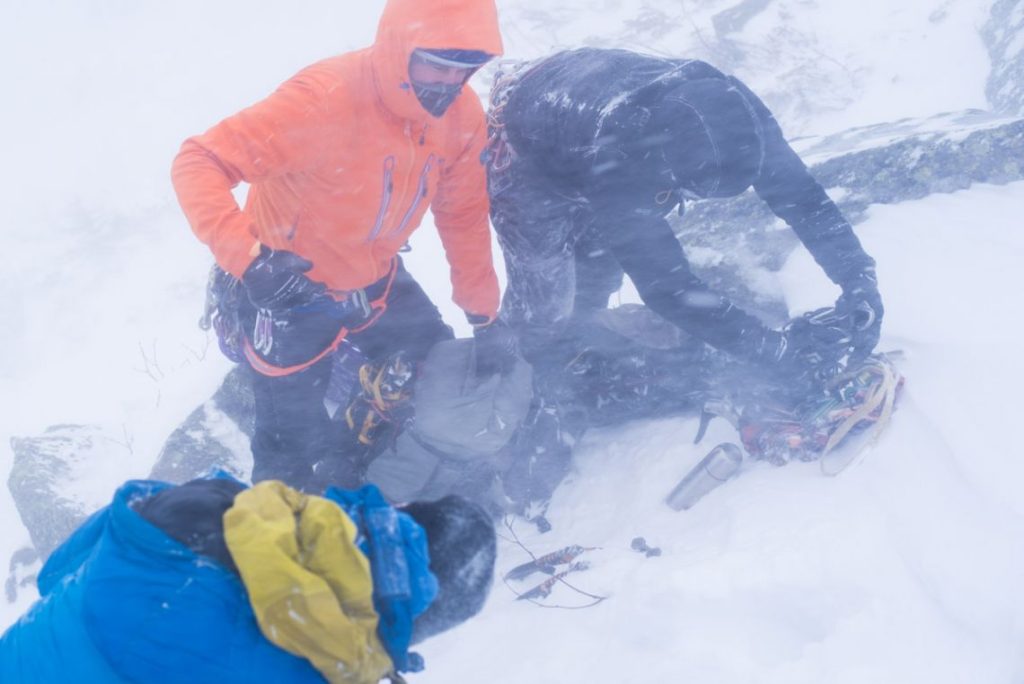
This week's We Are f-stop story comes from New Hampshire based professional photographer, Joe Klementovich. Like many successful outdoor adventure photographers, Joe first followed his passion for the outdoors, migrating north to the White Mountains of New Hampshire to pursue rock and ice climbing. His work has been featured in publications and ad campaigns nationally, as well as the New York Times and and takes him from the cold New Hampshire to the Florida everglades. In this story he's staying home, giving us an insight into shooting in the harsh weather of the highest peak in the Northeastern United States, Mt Washington.
Words and photos: Joe Klementovich

If you’re not from New England you’re most likely not familiar with Mount Washington. It’s our local “big” mountain. For generations mountaineers, climbers, hikers and skiers have tested themselves on the “Rockpile” At 6288 feet it’s not about the altitude but more about its location that makes it a mountain to be wary of. Dipping Arctic lows and the jet stream often meet and create days of 100 mph winds and -20F temps. Not ideal for fiddling with camera gear, mittens or anything else for that matter. It does create incredible scenes, frosted faces, wind sculpted snow and sweeping vistas of mountains and clouds crashing together.

Unlike most mountain ranges The Presidential Range, Mount Washington being the center of it, has lots of access points and is a short drive from Boston, Portland and New York. So there are lots of opportunity to capture people out in the elements, small figures on lonely ridges, goggle clad mountaineers coated in frost and the like. On the other hand the rugged weather keeps the crowds down and allows for untracked snowfields to be explored. If the weather turns and clouds descend it’s like being on another planet. Having the skills and gear to get through tough weather and into unique places is important and a priority for survival and making unique images, but it adds more weight and takes up more space, ice axes, crampons, helmet.

As a photographer carrying gear is an unfortunate part of the job, lenses, tripods, etc all add up way too quickly and above treeline in winter light is fast and fast is better than slow. Access to gear is key, zippers gotta work and have to be big to grab with gloves on and everything has to hold up in sub zero temps and driving winds. The little things mean everything when it’s blowing 60 mph and the storm clouds are rolling in. For example, changing lenses in blowing snow is a recipe for disaster, which forces me to carry a couple bodies, going back and forth has to be efficient but two bodies…. more weight - more space but the price to pay for creating a solid variety of images.

Often times I get to a location with just my base layers on and a windbreaker, it keeps the sweat to a minimum and that’s critical on really cold days. Once I settle into a spot and know I’ll be shooting for a while I dig out my big fat down layers. I also stuff batteries into inside pockets to give them a bit more life. All these layers take up room but thankfully don’t weigh much. Having access to warm layers quickly keeps hands warm, and fully functional. Knowing where gear is makes everything better, faster and in the end more comfortable. On a windy day a loose jacket is gone before you can string a couple swears together.
I’m an impatient photographer by most standards sitting behind a tripod for hours on end doesn’t work for me and on these winter days it’s probably a good trait to have.
On the move again, stow gear, drop layers and start post-holing through thigh deep snow trying not to get too sweaty but chasing the last light requires a bit more speed a bit more sweat. The wind is shifting and ramping up and the sun has dipped below the ridge, time to head downhill and go warm up. It’s a long six months of winter up here.

Joe's photography takes him from assignments in the sub-zero ravines of New Hampshire's Mount Washington to the bug infested mangrove islands of the Florida Everglades fly fishing for tarpon have appeared in print nationally. His work has been the cornerstone of national ad campaigns for Mission Athlete and Voltaic Systems and Sterling Rope. He says:
"I thrive on creating authentic imagery for editorial and commercial clients in unique and difficult locations. I feel that my photojournalist background works well with commercial projects committed to real storytelling. My freelance career includes working with The New York Times, Boy’s Life Magazine, Fly Fisherman and many others that place a premium on capturing real people, places and the stories they tell."
Find more of Joe's work on his website, Instagram and Twitter profile.
"We Are f-stop" is for all f-stop users to share their stories from the field, from small daily adventures to epic travels. Contact us with your story on Facebook or drop us an email to [email protected] and let us know where your photography takes you and your f-stop pack!
SHOP ALL GEAR MORE WE ARE f-stop


©2022 F-stop
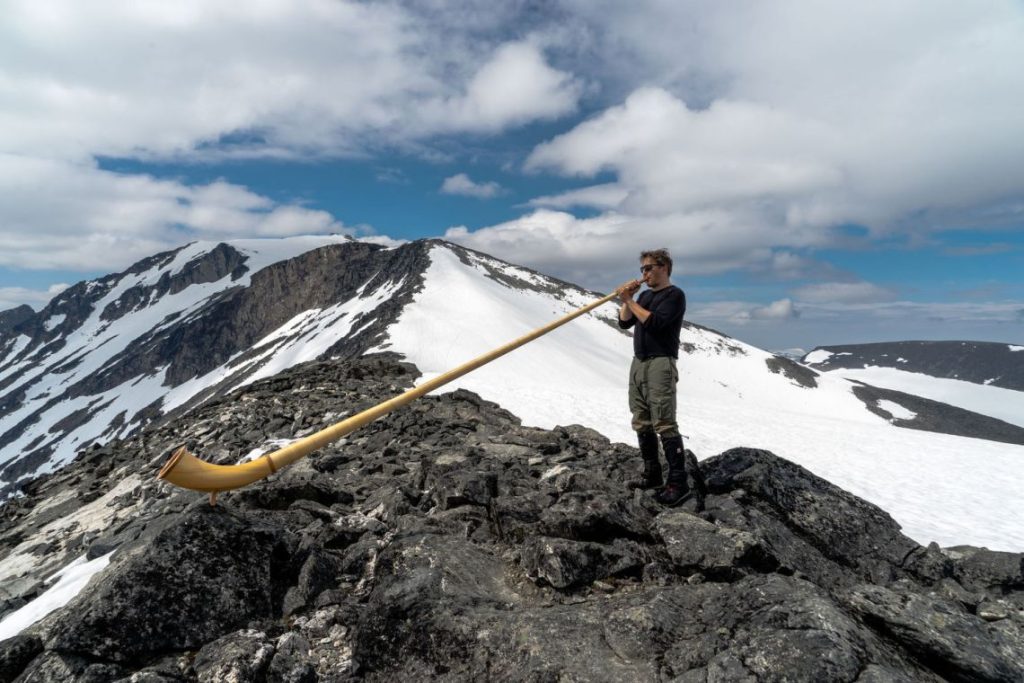
f-stop user Andrea Hitzemann from Germany loves shooting landscape and people in a documentary style. She follows her passion for the outdoors and travel, running an online community .enecco and hiking and climbing while shooting herself. Andrea got in touch to share her 'Scandinavian Summits' project in this We Are f-stop story:
Can you tell us a little about yourself as a visual creative?
I would call myself as a passionate semi-professional photographer with possibilities to improve and learn forever. Since 1991 I started to photograph adventure travel all over the place. Step by step, year by year, I improved my skills in photography. Being passionate about photography, being outside and traveling made me launch the online community .enecco Outdoors in 2011. Since 2016 I have been looking after the platform and its members exclusively and working with photographers and filmmakers in a very creative, emotional and dynamic network. A tremendous pool for inspiration.


What is your 'Scandinavian Summits' project?
Last year I was asked, if I would like the idea to climb the five Scandinavian Summits and taking pictures of it. Why not I thought. I love the volunteering project anyway and if I can help to create to motivate people with my images to get out with families or friend to explore Scandinavia highest mountains, it’s surrounding, otherworldly nature and urban culture even better.
So I started to plan a trip with my husband in our VW T5 California to climb the "Scandinavian Crown" of the highest peaks in each country: Møllehøj in Denmark, Galdhøpiggen in Norway, and Kebnekaise, Sweden.
Since I climbed the Icelandic Hvannadhalsnukur in 2011 and the Finish Halti in 2017, the "Nordic High Five" of summiting the highest peaks in all five Nordic countries was only missing these three.
My aim wasn’t just to go there, climb and leave again. I wanted to make a journey with the possibility of visiting also the capitals of Norway and Sweden and get an impression of these two countries in a cultural, urban and natural aspect.
We wish to inspire and stimulate people of all ages and groups to set their goals in nature and follow us onto the magnificent northern summits. Therefor we need imges and this was my part of a wonderful volunteering team. Getting inspirational images on a trip that others inspire to follow.




We drove from home to the northern part of Denmark, climbed the highest Point of Denmark which is 173m high in nice weather and without botteled oxygen
From Fredrikshavn we took the ferry in best weather to Oslo and explored the town for two days before heading north to enjoy Rondane and Dove Nationalpark. After four amazing days out in Norways wonderful nature we met other guys from the team to climb mount Galdhøppigen together with an alphorn. This traditional Instrument from the Alps was used for hundreds of years to communicate between valleys. For us it is a way to communicate between countries and to show people: “Hey, if we can climb this mountains with an alphorn, you are able to go there easily.”
On the next day we went on a glacier together, still in best weather, before heading west to Ålesund. From here we could use the historic Hurtigruten postroute as a ferry to go up north to the Lofoten in 2,5days. Two very relaxing days with amazing food, breathtaking stops and outstanding views along the way.



We arrived Kiruna in a more typical Nordic weather after a two hour car drive in the morning. Unfortunately the weather forecast for the next days on top of mount Kebnekaise were a knockback for our plans.
We decided anyway to check out the Kebnekaise Fjellstation in case there is an unexpected weather change. Hope dies last! We couldn’t even reach that place due to a storm and snow even down in the valley. – 12°C and snowstorm with winds up to 120km/h at the top made it impossible to climb. Not this time. But we stayed in the Fjell overnight and saw a reindeer family in the morning before going south to Stockholm and Gothenburg.
Close to Kiruna we visited the Icehotel, several rooms where you can sleep in a frozen environment. Further south we explored the UNESCO heritage Gammelstad, an extraordinary Guitarmuseum in Umeå and a magnificent Outdoor Village at Höga Kusten called FriluftsByn.
Of course Stockholm was another great Highlight of the tour. We spent two days there to get an impression of this town in summer. The weather was still great after a three weeks journey in Scandinavia. A strong thunderstorm hit us 20km before we arrived home and washed away all the dust we collected on our trip.


How did you use your f-stop packs for this project?
I took the Dalston and the Loka UL with me.
The Dalston we used in the cities, visiting museums and on the ferries. In this urban situation I also used it to put my MacBook in. I used the Loka UL for the climbing and the trekking in Lappland. There I used it with the Gatekeeper strap extensions to fix a sleeping pad on the outside of the pack.
We got very used to using the Dalston on our travels, and ended up using both packs for smaller day hikes.



Why was this trip important to you?
For me it was very important to improve my skills in terms of photography, but also a great chance to understand the circumstances the photographers I work with have to face when they are taking images outdoors. Where to get electricity from, how not to loose it in the cold, what to take and how to pack the stuff in the right way. Just to name a view things.

What’s next for you?
Climbing Mount Kebnekaise in Sweden hopefully end of August with a lovely crazy crew and an alphorn.
Where can we see your work?
You can see my Instagram here.
My work for the project at: http://www.scandinaviansummits.com/en and on Facebook here and on Instagram here.


"We Are f-stop" is for all f-stop users to share their stories from the field, from small daily adventures to epic travels. Contact us with your story on Facebook or drop us an email to [email protected] and let us know where your photography takes you and your f-stop pack!
SHOP ALL GEAR MORE WE ARE f-stop


©2022 F-stop


Discount Applied Successfully!
Your savings have been added to the cart.